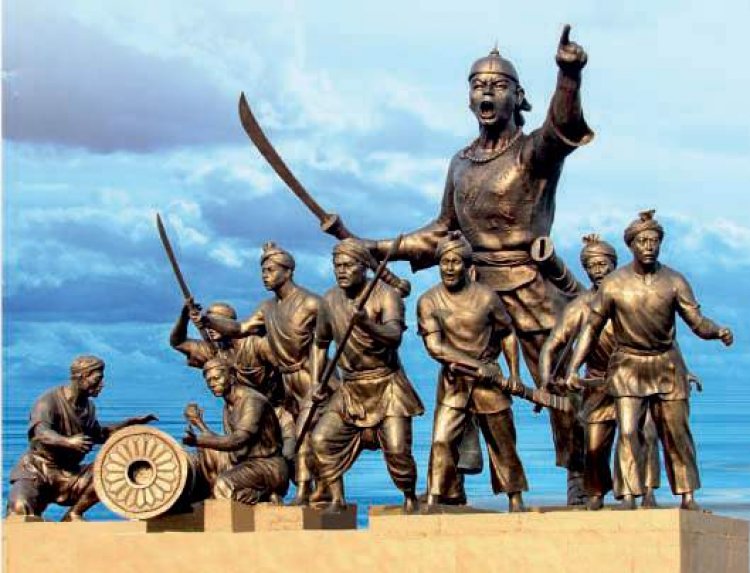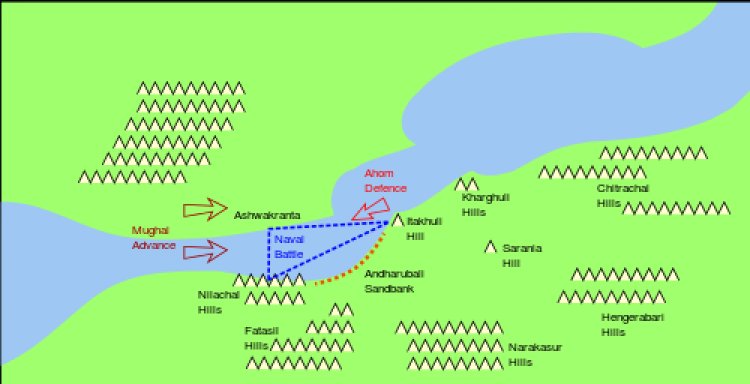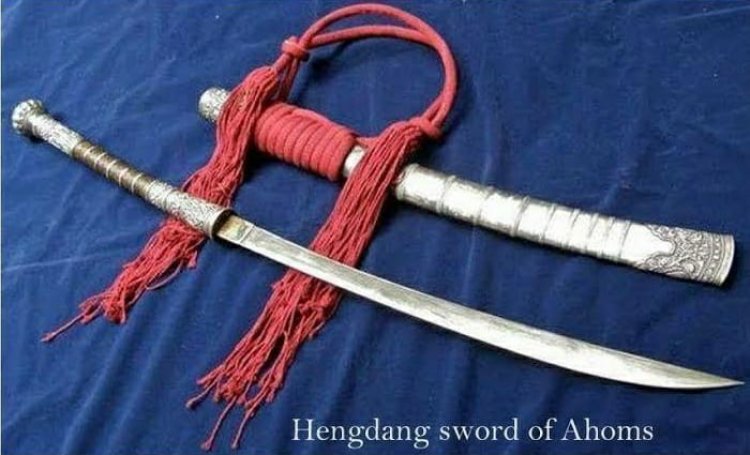You won’t believe how the Ahom army made the Mughals run for their lives!!
While we have always read about the Marathas, the Mughals and the Mauryas, not much is known about the long history of the Ahom warriors. Here, we will study one of the most fascinating aspects of Ahom history and also their conflict with the Mughals.
History of Ahom Dynasty
For nearly 600 years, the Ahom dynasty, the longest dynasty of India ruled the Ahom kingdom, which is a great part of the North-East. Susenghphaa also known as Pratap Singha (1603–1641) was the 17th and one of the most prominent kings of the Ahom kingdom. His reign saw an expansion of the Ahom kingdom to the west, and also the beginning of the Ahom-Mughal conflicts which refer to the period between the first Mughal attack on the Ahom kingdom in 1615 and ended with the Ahom influence, extended to the Manas river which remained to the western boundary of the kingdom, till the advent of the British in 1826. There were 17 major conflicts between the Ahoms and Mughals, out of which only one in 1663 was a major victory for the latter. The Mughals were interested in Assam for its rich natural resources, which means fertile areas, aromatic plants, elephants and also, the control of the trade route to Eastern Asia.
Treaty of Asurar Ali, 1639
Koch Kingdom, a state between the Mughal Empire and Ahom Kingdom, was an important state to keep Mughals imperialist expansions at bay. After the death of Nara Narayana, the Koch Kingdom split into two parts- the western Koch Bihar, ruled by his son Lakshmi Narayan and the eastern Koch Hajo, ruled by his nephew, Raghudev. Lakshmi Narayan formed alliance with Mughal Empire who attacked Parikshit Narayan son of Raghudev, and defeated him, but his brother Bali Narayana took shelter in the Ahom Kingdom. The Mughals use it as an excuse to invade the Ahom Kingdom. After the first battle in 1615 there was a series of engagements between the two parties until the Treaty of Asurar Ali in 1639, which fixed Barnadi river (north) and Asurar Ali (south) as the boundary between the Ahoms and the Mughals.
Treaty of Ghilajharighat, 1663
In 1660, Aurangzeb sent Mir Jumla to occupy Assam, he defeated Ahoms and captured the Ahom capital, Garhgaon. The Treaty of Ghilajharighat was signed between the Ahoms and the Mughals on January 23, 1663, at Tipam on the Buri Dihing which bought Mir Jhumla’s occupation of Garhgaon to an end and Ahom king Jayadhwaj Singha became tributary of Mughal Empire. He agreed to pay 3 lakhs as war indemnity and worst of all, he had to send his own daughter as well as his niece to the Mughal’s which left him heartbroken to death. It was complete humiliation for the proud Ahoms.
However, Jayadhwaj’s successor Chakradwaj Singha, swore to avenge the humiliation, and refused to pay any indemnity. He started making alliances with other kingdoms in the region and constructing new forts in the strategic corners of the kingdom in order to prepare for another war with the Mughals. The man he chose, to lead his new army was General Lachit Borphukan. Lachit soon trooped with a reformed Ahom army towards Guwhati and took control of the entire region. The Ahom Kingdom once again controlled their old border at the Manas river.
Battle of Saraighat, 1671
When Emperor Aurangzeb, came to know about the defeat at Guwahati, he sent a massive army of 30,000 infantry, 15000 Archers, 18000 cavalry, 5000 gunners and over 1000 cannons under Raja Ram Singh to conquer Guwhati. Lachit used geography to his advantages and decided to use the hilly terrains of Guwahati as the open fields were ideals for hit and run strategies. This was where Lachit’s brilliance was shown. He knew their army’s weakest asset was naval so he forced them into naval warfare. The war devolved into a set of see-saw battles between both the parties. The Assamese were fighting for their life and liberty, and the Mughals for the mere luxury of victory and territorial expansion. While the lengthy war was tearing the patience of both the Mughal and Ahom, they both ordered their respective commanders to end the war with a conclusive battle – that battle was fought at Saraighat in 1671.
The exhausted Ram Singh launched a massive naval attack on the Ahom forces at Saraighat which was led by Munnawar Khan. Lachit also fell terribly ill but he didn’t leave the ground. He proclaimed that he will rather die while performing his duty instead of running away, seeing their leader surge towards the enemy had an inspiring effect on the Ahom troops to fight the battle. It was a historic victory for the Assamese which is known as the Battle of Saraighat. Ram Singh, weakened by the repeated losses, left for Rangamati in March 1671.
Battle of Itakhuli, 1682
A year after the battle of Saraighat, in 1672, Lachit Borphukan passed away. But the Ahom-Mughal conflict didn’t reach an end. In 1679, Mughal’s again took possession on Guwhati which was abandoned by Lachit’s successor Laluk Sola. But once again, Ahom took over it when the Ahom Army under Dihingia Alun Borbarua defeated the Mughals at the battle of Itakhuli in 1682. This was the final battle and the permanent end of Mughals presence in Assam.
Ahom VS Mughals
Even today, Lachit Borphukan is remembered as the Assamese war hero. The best cadet of National Defense Academy is awarded with gold medal in Lachit’s name and also on 24th November It is celebrated as the ‘Lachit Diwas’. Still, it is an unheard and unknown victory to many which is needed to be known. A little bit of historical conclusion, especially one that proves what a vital force they were in ancient India, is as good a starting point as any.
What's Your Reaction?




































































































































